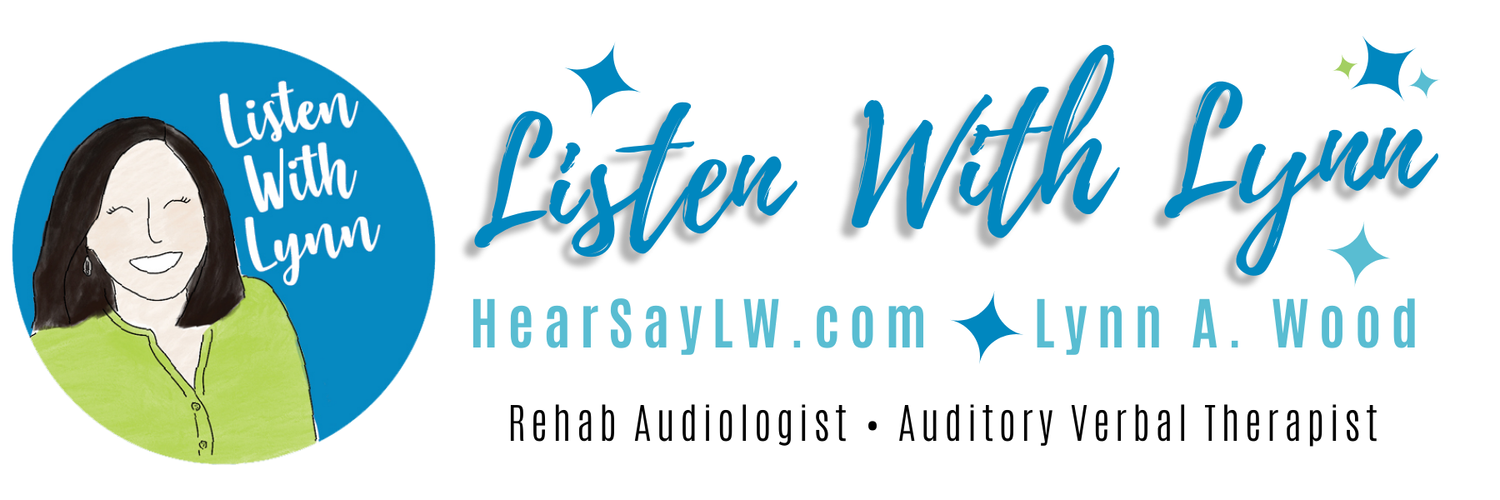As a follow-up to my post on, Lynn’s LSL Dollhouse Continuum I wanted to share strategies on following a child's lead in Auditory Verbal Therapy while guiding and coaching the families and meeting the child's goals.
 |
| Source |
I am very intentional when following a child’s lead in order to target specific listening and spoken language areas of need. In reply to your question, I sometimes brainstorm with the parents but most often model as we play and coach throughout the session a little bit of information at a time. I have found hands-on coaching is most effective. I have a sign in my office that says, “Tell me and I forget, teach me and I may remember, involve me and I learn.”
I have worked with some families who are “good at playing” and many others who do not know where to begin. If the toy doesn’t have batteries and entertains even for a short time they are lost.
Therefore, I model how to engage a child in play and also how to join in and play. Being clear about the LSL goals is essential to guide the play.
Here are three strategies, I model and use to Follow the Child’s Lead.
1. Observe, Wait and Listen (OWL)
Observe for what the child is interested in.
Wait to give the child a chance to initiate or get involved in an activity
Waiting can be hard to do! I try to model counting to 10, looking expectant and leaning forward
Listen to what the child is trying to tell us
2. The parent and I begin playing together with the hope that the child follows and joins in the fun. When the parents and I are playing (this can be in short spurts) I model the LSL skills we are targeting.
I love to hear the child come back and use what he just heard modeled. In this situation, language is caught through hearing and not directly taught.
3. I often set up or act out a scenario to encourage the child to communicate.
For the dollhouse, I may have bits of cracker on the little kitchen table. I often set-up of something unexpected to encourage or give the child a reason to communicate (sabotage). I always include a broken chair to make a connection to the earlier taught Three Bears story.
4. Giving the child choices is effective. I may offer the bear family or people dolls to use in the dollhouse.
Have fun playing and listening together!







